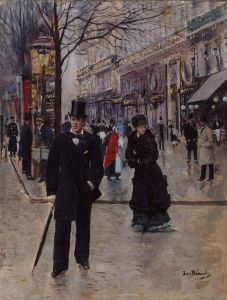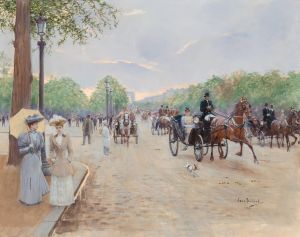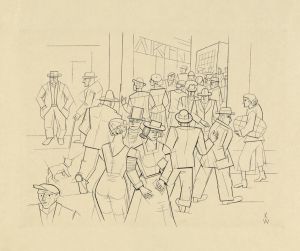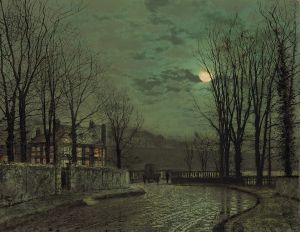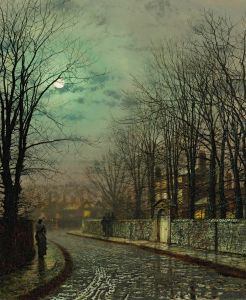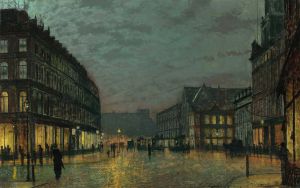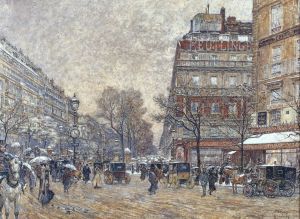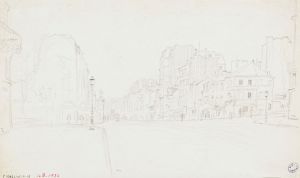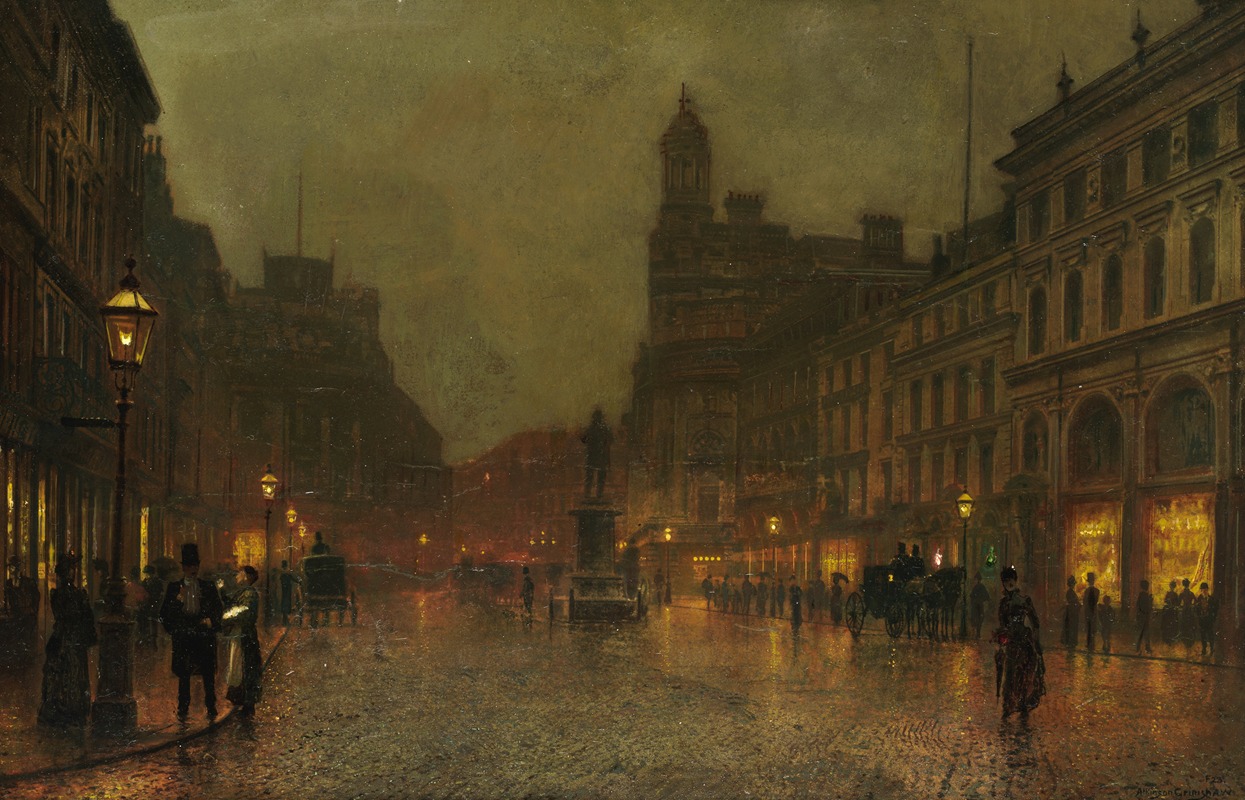
St Ann’s Square, Manchester
A hand-painted replica of John Atkinson Grimshaw’s masterpiece St Ann’s Square, Manchester, meticulously crafted by professional artists to capture the true essence of the original. Each piece is created with museum-quality canvas and rare mineral pigments, carefully painted by experienced artists with delicate brushstrokes and rich, layered colors to perfectly recreate the texture of the original artwork. Unlike machine-printed reproductions, this hand-painted version brings the painting to life, infused with the artist’s emotions and skill in every stroke. Whether for personal collection or home decoration, it instantly elevates the artistic atmosphere of any space.
John Atkinson Grimshaw's painting St Ann’s Square, Manchester is a notable work by the renowned British artist, celebrated for his evocative depictions of urban and suburban scenes during the Victorian era. Grimshaw, born in Leeds in 1836, was a self-taught painter who became famous for his mastery of light, atmosphere, and meticulous attention to detail. His works often captured the mood of industrial Britain, with a particular focus on the interplay of light and shadow in nocturnal or twilight settings.
St Ann’s Square, Manchester portrays a view of the historic square located in the heart of Manchester, England. The square, named after St Ann’s Church, which was completed in 1712, has long been a central feature of the city. By the time Grimshaw painted this scene, Manchester had grown into a major industrial and commercial hub, and St Ann’s Square was a prominent location for trade, social gatherings, and cultural activities.
In this painting, Grimshaw employs his signature style, characterized by a moody, atmospheric quality. The scene is likely set during the evening or a rainy day, as is typical of Grimshaw’s urban works. The wet cobblestones reflect the glow of gas lamps, creating a luminous effect that enhances the sense of depth and realism. Figures are depicted in the square, some walking or engaged in conversation, though they are rendered in a way that emphasizes the overall ambiance rather than individual detail. The architecture of the surrounding buildings, including the church, is carefully represented, showcasing Grimshaw’s precision and dedication to capturing the essence of the location.
Grimshaw’s work often evokes a sense of nostalgia and quiet introspection, and St Ann’s Square, Manchester is no exception. The painting serves as both a document of Victorian Manchester and an artistic exploration of light and atmosphere. It reflects the transformative period of the late 19th century, when cities like Manchester were experiencing rapid industrialization and urbanization.
The exact date of the painting is not definitively recorded, but it is consistent with Grimshaw’s mature period, during which he frequently painted urban scenes in cities such as Leeds, Liverpool, and London, in addition to Manchester. Today, Grimshaw’s works, including St Ann’s Square, Manchester, are highly regarded for their technical skill and their ability to capture the spirit of the Victorian era.





